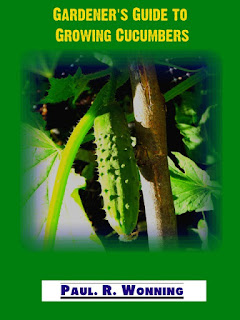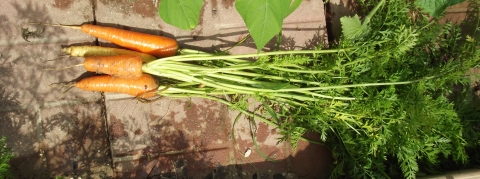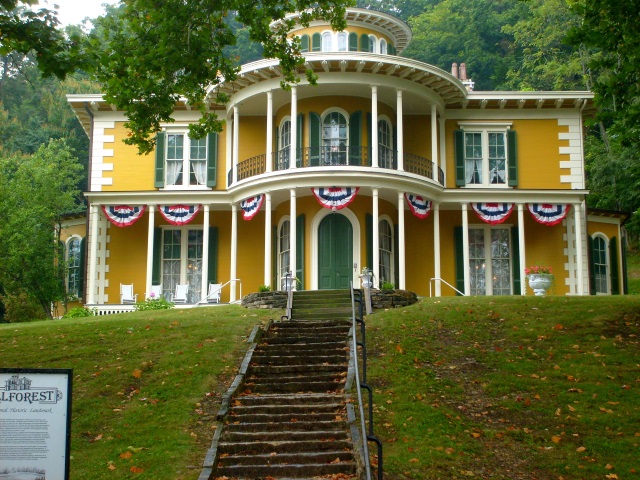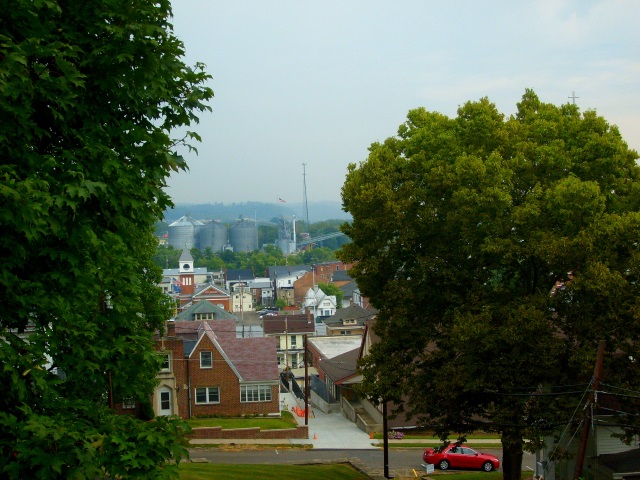Sample Chapter - Dark Fantasy Novel - Gatherer of Souls
Chapter One
Kelley Dawes had no inkling of the terror that would soon explode upon her contented world. It all began in a most exciting way, the day she started her new job and made a new friend.
Kelley walked down the hallway and stopped in front of the door at which the receptionist had indicated. The gold plaque on the door indicated it was the right office. Kelly gave a light knock and entered when a voice from within said, “Come on in.”
She pushed the door open.
Her new boss, Jason Bell, greeted her with a smile,“ Good morning, Kelley, how are you this morning?”
“Fine,” said Kelley, with a nervous tinge to her voice. “I am ready to start, Mr. Bell.”
“Good, I think you’ll like working here, Ms. Dawes.” Jason replied as he reached across his desk and punched a button on his phone.
“Yes, Mr. Bell,” a feminine voice answered.
“Betsy, Kelley Dawes is in here. She is ready to start. Can you come in and show her to her cubicle and get her started?”
“Sure, Mr. Bell, I’ll be right in.”
A moment later, the door opened and a dark haired young lady stepped inside.
“This is Kelley Dawes, Betsy. Kelley, this is my administrative assistant Betsy Neyer.”
The young ladies smiled at each other as Jason Bell continued, “Betsy, show Kelley to her office and help her get started.”
“Okay, Mr. Bell. Come on Kelley, just follow me.”
The two young women left the office and began walking down the hall, which soon opened into a large room with a dozen or so cubicles. Overhead fluorescent lights lit it. The place had the normal office smells of electronic equipment and paper.
“You’ll be working in this cubicle right here,” said Betsy, indicating a small office right across from the hall.
Kelley went in and sat down at her new desk, powered up the computer and watched as it booted up.
“Where are you from?” asked Betsy as they waited for the computer to connect to the network.
“Centertown. It’s down south.”
“I know where it is. I am from Turkeyfoot.”
“Turkeyfoot, why that is just a few miles from Centertown. We played you guys in basketball.”
“So we are neighbors,” Betsy said with a smile. “Are you living here in Indianapolis?”
“Yes, I have an apartment here on the south side on Madison Avenue. It's not too far from the office.”
“Really? I live nearby, in an apartment on Stop 11. We are just a few minutes from each other.”
By now, the computer was ready, and Betsy spent the next two hours showing Betsy her new duties. When Kelley looked like she could continue, Betsy said, “I have a report to file for Mr. Bell. I will go do that and come back. It will take me about an hour.”
“Okay, I think I will be fine here awhile.”
“If you have any questions, just call me. All you have to do is dial my extension, which is 002.”
Betsy walked away, while Kelley pecked at her computer. She studied the files before here and completing the tasks Betsy told her to do.
Time passed quickly, and before Kelley knew it, Betsy was standing by her desk, studying her work.
“That is great, Kelley. It looks like you are doing just fine.”
Kelley looked up, and brushed her black hair back behind her shoulders.
“I think I understand what I am doing.”
“Say, it is almost lunchtime. What do you say we do lunch? When we come back and I will show you the rest of your duties?”
Kelley stood up and powered the machine down as she answered, “That sounds wonderful, I am famished.”
“How do you like living in the city so far,” asked Betsy as the two walked down the hall and out into the street.
“I haven’t been here long,” said Kelley. “My brother lives up here and helped me find an apartment. I really have not had time to enjoy the city much yet. I just moved and got most of my stuff unpacked. I am still exploring this part of town, trying to find the right stores and restaurants.”
“Tell you what,” said Betsy. “I am not doing anything tonight. How about we go shopping and I can show you around town.”
“That sounds great,” said Kelley, smiling. “Thank you.”
Over the next several weeks, the two young women spent a great deal of time together. They explored the downtown nightspots of Indianapolis and shopped.
A few weeks later, in early October, the hint of falling autumn leaves scented the air. The two were enjoying a beer at a popular downtown tavern, basking in the golden sun from their table on the sidewalk. They watched as traffic and passersby went by. The sun glinted off the Artsgarden that spanned Washington Street nearby.
“Gosh, Betsy, this is great. Don’t you miss Turkeyfoot, though?”
“Sometimes,” she said. “This city is wonderful, but sometimes I get tired of it. It is so busy all the time, and the traffic is crazy.”
“Maybe you and I should find a place in a small town nearby to rent. We could save some money by renting one place.”
“That sounds like fun,” said Betsy. “It would have to be close, though.”
“Lets pick up some beer and go to my apartment and spend some time searching the internet and see what we can find.”
“Okay, let’s,” said Betsy. She drained her mug, finished the last crumbs of the pie on her plate and the two left.
Hours later, Betsy pointed at the computer screen as she observed, “That looks promising.”
“Yes, it is in Amackville, just an hour east on the interstate. It looks like an old farmhouse. I’ll call the owner and see how much they want for it.”
She dialed her phone, listened to it ring. A brief conversation followed. She held her hand over the phone and leaned across to Betsy and whispered in excitement, “They want less for a whole house than I pay for my apartment alone.”
She told Kelley the amount.
“We can ride in together most days. Even with the extra gas, we would still save money.”
“That, and live in a neat old house.”
“Set up an appointment for this Saturday for us to look at it.”
Kelley set up the appointment, her face lit by a smile.
“We can meet with him at 11:00 Saturday morning.”
“Great. Say, there is a Comforsuite Hotel there, just off the interstate. What say we make a weekend of it? We can look at the house and decide if we want it while we explore the town. We can come back Sunday.”
"That sounds wonderful.”
Kelley surfed to the chain’s website and made the necessary reservations.
Saturday morning found them at the house, looking at it from the driveway with appraising eyes.
“The garage isn’t attached, but it is a two car so there is room for both our cars.”
“It has a great big yard, and there is a huge tree in the back yard.”
Another car pulled up behind them, and they got out of the car. A man got out, walked towards them and held out his hand.
“Good morning, ladies,” he said as he shook Betsy’s hand.
“I am Betsy Neyer,” she said, “and this,” she glanced at Kelley, “is Kelley Dawes.”
“Good to meet you both,” he said. “My name is Ralph Wittbach, but you can just call me Buck,”
He put his hands behind his back as he asked, “I just finished restoring it a few weeks back. Are you two ready to look at the house?”
Betsy nodded, and the man took out his keys and walked up the stone steps that led to the front door. The two women followed. He opened the door and they stepped inside.
“Wow,” Kelley gushed as she glanced around the room. Buck had done a masterful job of restoring the old home. The scent of fresh paint still clung to the air and new cabinets gleamed in the kitchen. An oak staircase rose majestically in the center of the foyer. Huge windows allowed the golden autumn sun to fill the room.
“The windows are all new, and I insulated it before putting the siding back on,” informed Buck. “It’s not bad at all to heat. In addition, there is a wood burning stove, if you choose to use it, which cuts back on the heating bills quite a bit. I can supply the wood if you want it.”
They toured the rest of the house, and both loved it. It was charming, and still smelled of fresh paint and carpet.
When they finished, Betsy said, “We are staying in town this weekend at the Comfort Suite. Can we call you tomorrow morning to let you know what we decide?”
“Sure,” said Buck. “I am not busy tomorrow. I can meet you here again in the morning or afternoon, whichever you settle on.”
“That sounds great,” said Kelley. “I will call you in the morning to let you know what we decide.”
“There is a bowling alley and a theatre downtown,” said Kelley as she tipped a cold glass of beer to her lips.
“I saw a BigMart at the last exit, about ten minutes back on the interstate. The town looks clean and there are lots of places to eat.”
“And it is only about fifty five minutes from the office.”
“It takes thirty minutes to get there from my apartment.”
“We can take the interstate to the Acton exit and go in on Southport, avoiding some of the worst traffic. Heck Bets, I like it.”
Betsy smiled as she eyed the chicken dinner the waitress placed in front of her.
“So do I. I think we should take it, Bets.”
“So do I. I will call Buck in the morning with our decision.”
Bacon, coffee, sausage filled the restaurant with their comforting blend of aromas. The hostess seated Betsy and Kelley at a table that overlooked the busy highway.
“I’ll have a coffee,” said Kelley. “Cream and sugar also, please.”
“Me, too,” Betsy said. She picked up a menu and perused the selections.
“What do you think, Kel? Do you want to rent the house?”
“I would like to,” she said. “The lease would be for a year. If we hate it that much, we can surely last that long.”
Betsy took a sip of her coffee, saying with satisfaction, “My, that is delicious.
She looked up at her friend and said, “I think it will be fun, Kel.”
Kelley placed her menu back down and gave her order to the waitress who stood; pad in hand, by their table. Then she looked at Betsy. “Then I will call Buck. We can meet him there this afternoon, sign the lease and go back to the city.”
She pulled out her cell phone, punched the number and after a brief pause, said, “Yes, Buck? It’s Kelley. Say, we would like to take the house. Can we meet you there later and sign the lease? We can? Okay, see you later.”
She returned the phone to her purse, saying, “He will be there at 12:30.”
“Cool,” said Betsy. “Enough time to eat our breakfast and go for a walk in that park we saw yesterday.”
“That was nice, Bets. We have everything here we want, and we are close enough to the city to walk there to enjoy it.”
By then their orders arrived and the two young women dived into their breakfasts.
Betsy took the sheaf of papers from Kelley and scribbled her signature below Kelley’s name. Then she handed the papers to Buck, who took them and placed them in a yellow envelope.
Kelley glanced at him and asked, “When can we move in?”
Buck smiled as he answered, “The lease runs from November 1 to October 31 next year. However, the house is empty now. You can move in any time you like. Here are the keys.”
He slid six keys across the Formica counter top towards Betsy.
“There are two keys for the front and back doors and two for the garage. The remote garage door openers are on the shelf by the door in the garage.”
“It is a wonderful house,” Betsy said as she picked the keys up. She separated two off and handed them to Kelley. Then she slipped the other three in her purse.
Buck stepped back and looked around.
“It was my mom’s house,” he said. “She passed away about a year ago.”
“I’m sorry,” said Betsy.
Buck shrugged as he said, “She was old and sick. She had been in the nursing home for about a year. No one has lived in this house for about two years. I have been taking care of it. Last summer I had it remodeled, so all the improvements are new. I didn’t have the heart to sell it. I am just glad I got two people in it I can trust.”
His eyes wandered to Kelley as he said, “I hope you two young ladies enjoy living here.”
“Oh, we will,” said Kelley. “Both Betsy and I are from small towns. We like the city, but miss the slower pace of a town like this.”
“It can get pretty hectic here, too,” said Buck. “But I know what you are saying. I lived in Pittsburg for a while. I couldn’t wait to get back here.”
At this, he glanced at his watch.
“I want to get over to the orchard before it closes. I want some fresh apple cider and the wife wants a bushel of apples.”
Betsy’s eyes lit at the mention of an orchard as she queried, “Where is the orchard?”
Buck pointed north.
“It is north of Bremen, on the highway. It is about a ten-minute drive from the interstate. You can’t miss it.”
Kelley looked at Betsy, saying, “I would like a jug of cider before we go back.”
Betsy smiled and said, “Some apples would be nice, too.”
After Buck left, the women went over the house, planning their move. “We can move Halloween weekend,” said Kelley. “My brother Bruce and his girlfriend will help us. He has a couple of buddies that I am sure would help out too,”
“We can have a little party afterwards,” said Betsy. “That restaurant that we ate at last night caters. I saw the sign. We can have them bring some of that fried chicken. We can have some beer cold. There is enough room for everyone to sleep over before going back on Sunday.”
“That sounds like fun,” said Kelley. “Halloween is on Sunday this year. We will find out on our first night alone if this house is haunted.”
With a toss of her head, Betsy snorted, “Hah. I don’t believe in ghosts.”
“Neither do I,” said Kelley, with a laugh. “But you never know about these old houses. I am sure someone has died in here. Maybe they are trapped and can’t get away.”
“Yeah, right.” Betsy glanced at her phone. “Buck said the orchard closes at three. We can just make it before heading back.”
“Then let’s go. We can come back down next Friday night, bring some things down and get the house ready.”
With that, the two locked up, got the garage remotes from the garage and drove off.
Betsy moved about the living room, gathering beer bottles and tossing them in a garbage bag. From the kitchen, she could hear the sound of the water running from the faucet as Kelley cleaned up the dishes.
The move had gone smoothly. Bruce, his girlfriend and his buddies had stayed the night, partying well into it. Bruce was an excellent cook and had whipped up a delicious breakfast, followed by more beer. By mid afternoon, the party had left, taking their trucks and laughter with them.
“Great party,” she called out.
“Yeah, it was a wonderful way to break in our new house.”
Betsy glanced out at the sun, which was lowering on the horizon. “I think I am going to walk over to that little park. Do you want to go along?”
“Yeah, give me a minute. I want to finish up here. We can stop at a burger place and bring some burgers. The cable is working so we can watch a movie before going to bed.”
“That sounds great. I’ll back the car out and get some water bottles.”
“We better pick up some candy, in case we have some trick or treaters.”
“I think the town did that on Friday, Kel. We missed it.”
“We can still get candy. We can treat ourselves.”
Betsy laughed, “I am sure there is plenty of candy left at the store.”
She went outside, feeling satisfied. This was a good move. They would enjoy it here.
Later that night after they finished the burgers and movie Betsy and Kelley readied for bed. Kelley turned out the light and glanced out her bedroom window at the gentle scene that unfolded beneath it. She was happy and relaxed. This was better than seeing cars, people, and streetlights. She lay down and pulled the covers over her. Sleep came quickly, driven by good food and beer.
As the lights went out, and the two young women slept, the house was still. The two young ladies lay asleep in their beds. Outside, a full moon covered the late fall landscape with its silver blanket of light. The last of the katydids chirped in the bushes, and crickets joined them in their noisy symphony.
The spirits of the house gathered and watched the women sleep. A wave of agreement swept amongst the house spirits. They liked these young women. They would weave a protective net around them and protect them from harm.
Outside, the giant oak in the backyard shivered. The spirit that lived within it sensed changes in the autumn wind. It was an ancient spirit that had seen many changes. The spirit knew that not all changes were good.
Available in multiple ebook formats and softbound
Buy Paul Wonning's At:
Picker's Paradise Trader Mall
129 N Broadway Street
Greensburg, Indiana, IN 47420
(812) 663-0021
On the Square in Downtown Greensburg
Wholesale Pricing Available
For more information, contact:
Mossyfeetbooks@gmail.com
Orders over $50.00 Free Shipping
Download the Mossy Feet Books catalog today for great reading.
Facebook
Indiana Places
Abes Beer Garden
Stories of American History
Mossy Feet Books
Twitter
Linkedin
YouTube
Pinterest
Paul Wonning's Books on Amazon Page
Paul Wonning's Books on Smashwords Page
Paul Wonning's Books on Apple
Paul Wonning's Books on Kobo
Paul Wonning's Books on Barnes and Noble
Paul Wonning's Books on Createspace
Paul Wonning's Books on Google Play
© 2018 Paul Wonning
























